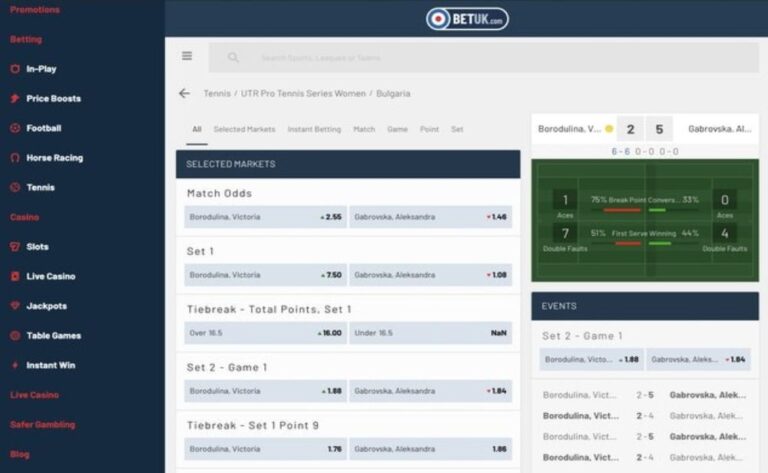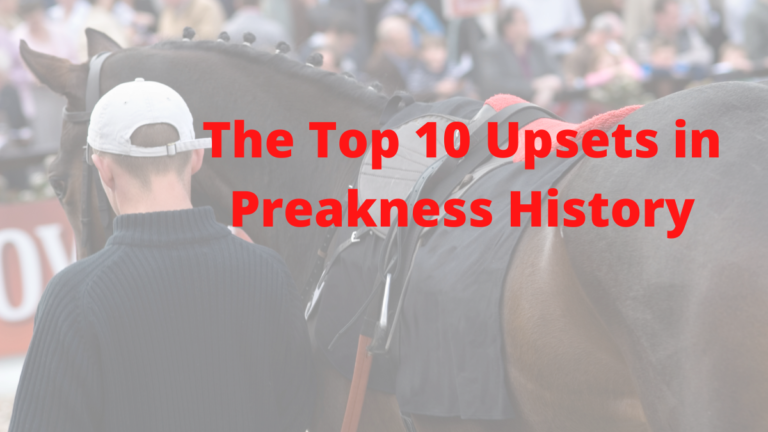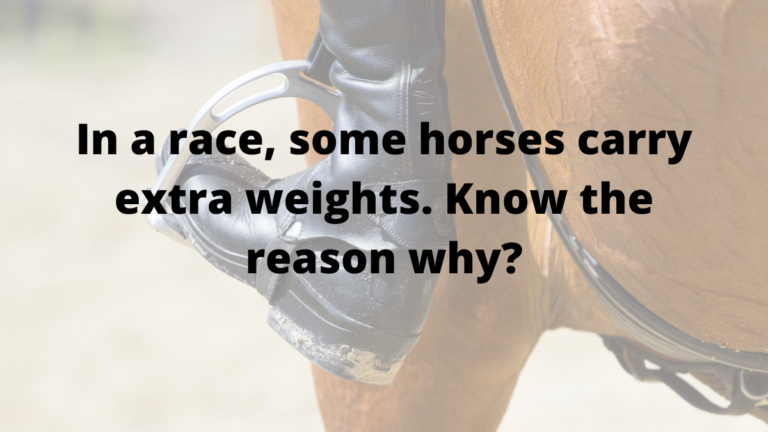Bets on Horse Races: Getting to Grips with the Fundamentals

When it comes to betting on sports, horse racing is consistently ranked among the most popular activities all over the world. The main events, in particular, are responsible for drawing in a substantial number of wagers. Millions of people tune in to watch horse competitions like the Kentucky Derby and the Grand National, and the great majority of those individuals have some financial investment in the outcome of the races. That is THE REASON WHY they are observing.
Only a few of spectators take an interest in horse racing for the simple joy of watching a sport they watch. In point of fact, if it weren’t feasible to place bets on horse races, the sport of horse racing probably wouldn’t last very long. The betting, which is what ultimately keeps most spectators interested in the races, is what draws in the majority of those who watch them. If they didn’t have a horse to cheer for, the atmosphere simply wouldn’t be the same. They’d never know the sensation of utter elation that comes with watching their horse race pick run away from the competition in the home stretch and win first past the post.
One of the reasons for the high level of popularity of horse racing betting is that it can be rather thrilling. One further advantage is that getting started is not difficult at all. Anyone may place a wager on a horse race, and they don’t even need to have a strong understanding of the sport of horse racing or betting in general.
Having said all of that, prior to putting any money at risk, we feel it is essential to have a fundamental understanding of a few key concepts. Because of this, we felt it necessary to include this part in our guide to horse racing. Even individuals who have placed bets on horse races in the past can pick up some useful information from this guide, even if it is primarily designed for people who are just starting out.
Following a brief introduction to the sport itself, we move on to discuss the various betting things available. In addition, we offer some helpful advice that is designed to assist you in getting the most out of your wagers on horse racing.
Gaining an Understanding of the Horse Racing Sport
The sport of horse racing is played all around the world. It is extremely well-liked in places like the United Kingdom, the United States, and Australia; nonetheless, there are a great many additional nations in which racing is held on a daily basis.
The fact that different regions of the world play this sport in different ways is one of the first things you need to understand about it. To provide one example, horse racing in the United Kingdom and horse racing in the United States are not exactly the same thing at all. It is important to have an understanding of the differences, even though many of them are rather unimportant. This issue will be addressed in the subsequent section of our guide.
A Round-the-World Look at Horse Racing
You can discover a wealth of helpful information on the operation of the sport in a variety of geographical areas across this site. We have discussed a variety of topics, including regulation and control, the rules of racing, and the classification of races. In addition to this, we have included comprehensive guides that cover all of the important races and events that take place in each area.
Another essential thing of knowledge to have is the awareness that there are a variety of distinct types for horse racing. Here are some instances.
- Racing on flat tracks
- racing competitions
- Going after the steeplechase
- Riding in long distance events
- Racing with quarter horses
- Horse-drawn sulky racing
You shouldn’t have to necessarily study about each type in great depth, but you should definitely understand as much as you can about any type on which you want to place a bet. In the sport of horse racing, it is important to be knowledgeable about the many breeds of horses that are used. When it comes to betting on sports, even while this information is not precisely crucial, having even a small amount of background knowledge may be of great assistance.
Both of these subjects have been the subject of articles that we’ve published, and we strongly suggest that you make the time to read both of them.
Various types of Horse Racing
Race Horse Breeds
As there are a number of words and phrases that are used in horse racing that you might not be acquainted with, we also recommend knowing all of the jargon that is used in the sport. A complete glossary of words related to horse racing has been developed by us in order to assist you with this. It includes all of the terms and phrases that you ought to be familiar with, in addition to in-depth explanations of what each of them means.
The Terminology of Horse Racing
It is important that you take note that this glossary includes defines a variety of terms and phrases that are associated with betting on sports. Now that we’ve covered some of the basics of placing bets on horse races, let’s move on to some of the more advanced topics.
Gaining an Understanding of the Betting on Horse Racing
The fact that it’s not hard to get started betting on horse races is something that we’ve already brought up. The fundamentals that you ABSOLUTELY MUST be familiar with are not overly difficult, and you will be able to acquire knowledge of the more difficult components as you progress.
Your first order of business should be to educate yourself on the myriad of wagering options available to you when it comes to horse racing. You might not be aware of this, but there are a few different choices available to you here. These are the ones that occur most frequently.
- Fixed odds betting
- betting using either parimutuel or tote systems
- Exchange betting
Bets placed with fixed odds are by far the most common type of wager placed on horse races. This is where bets are placed with a bookmaker at the odds that have been determined. If your wager is successful, you will get payment according to the odds. If it doesn’t win, the bookmaker will keep the money you staked on it.
Betting through a parimutuel system is a little bit different from other forms of gambling since there are no odds involved. Payouts are determined not just by the total amount gambled on a race but also by the number of persons who correctly predicted the winning horse.
Exchange betting is a kind of gambling in which bets are placed with other participants rather than with a bookmaker. This kind of betting requires some practice before becoming second nature, but it does provide a few benefits over the other two choices.
On the next page, we go through each of these different types of betting in further depth.
Bets That Can Be Placed on Horse Racing
This page will also go through the many different possibilities you have for WHERE to bet your wagers. Bookmakers at racetracks and casinos, as well as those located in betting shops and on the internet, are included in this category.
The second thing you need to be aware of is that there are several distinct bets that can be placed on horse races, and each one offers a different chance of winning. There are a lot of other wagering alternatives outside just betting which horse will win out on top, which is something that frequently comes as a surprise to beginners.
While some of these choices are really easy to understand and implement, others may require a bit more thought. On the next page, we go through each one in detail and provide examples of how they operate.
Different racing Options Available at Horse types
To begin placing bets, the information shown here is really all that is required of you. You may stop reading this right now if you want to if the only reason you’re interested in betting is for the excitement it brings you if you simply want to bet for pleasure. Betting on horse races will provide you with a significant amount of racing even if you don’t get any other knowledge. There is a possibility that you may win some money if you try your luck.
However, it’s possible that you don’t want to win based just on chance. You could want to offer yourself a genuine opportunity of winning money on a consistent basis by taking the situation a little bit more seriously and giving yourself more things. Is that even a possibility? Definitely! However, it is by no means a simple task. You still have a lot to learn, and your betting strategy is going to need a lot of hard effort on your part.
We are able to assist you with this matter; but, there is one thing that has to be made perfectly clear. When it comes to placing bets on horse races, there is no easy way to come out on top. Although we are able to supply you with some professional guidance that will increase your chances of winning, we are unable to provide you a technique that GUARANTEES you will make a profit. There is no such system available.
In the end, betting successfully on horse races requires three things to be in place. These are outlined in the following:
- A knowledge of worth.
- The skill to properly handle one’s financial situation.
- A methodically outlined procedure for choosing your options.
Don’t worry if you have no idea how to begin any of these; that’s perfectly normal. In this particular instance, we will be of assistance. We have provided you with two articles that include all of the information and recommendations that you require. If you devote some of your time to reading them, you will be well on your way to achieving your goals.
Value & Money Management
Choosing Between Your Options
There are a few articles in our general sports betting area that might be of assistance to you as well. Even if none of them are particularly geared at horse racing, a significant number of the issues that are discussed are pertinent in at least some aspect. The following articles are ones that you should make a point to read.
- Keeping Records and Conducting Analyses
- A Comparison of the Odds
- Managing Your Feelings and Emotions
- Formulating a Strategy for Your Own Victory in Sports Betting
- Formulating and Evaluating Emerging Tactics
- Psychological Research and Heuristics
It’s possible that you don’t feel prepared to process such a large amount of knowledge just yet. That is not a problem because there is a lot to process in this area. There is no problem with getting started right away and then figuring out what you need to know as you go along. However, you should make an effort to create excellent habits from the beginning, so ensure that you read the next part. When you are ready to make your first wager, we have a few tips for you that will help you get the fundamentals down correctly.
Top Tips For Beginners
As a novice betting, you shouldn’t go into horse racing with the expectation of making a profit. That is not even close to being practical. Even if you are really well prepared for something, success will not arrive immediately. It will be some time before you truly understand what you are doing and are able to choose the best course of action on a regular basis. Until then, you will need to make some adjustments.
However, this is not a reason to get the things of the situation absolutely incorrect. You may rest assured that you will commit some errors, but the goal is to limit the number of mistakes you make. Your chances of being successful in the long run will increase according to the number of things you do right during this stage.
You’ll be able to approach things in the proper manner and steer clear of making mistakes that aren’t absolutely essential if you follow the advice that we’ve offered here. If you give them your whole attention and do everything you can to follow them, you should have a successful beginning to your career as a bettor on horse races.
- Begin with a low level of investment.
- Set an overall budget
- You shouldn’t bet on every race.
- Avoid parlays
- Keep an eye on the races.
- Have no qualms about supporting unproven candidates.
- Bet online
These tips are all rather simple, and there is not a great deal of further explanation that is required for them. To ensure that you fully comprehend the actions that are recommended for you to do as well as the reasons behind them, we will now go into a bit more depth on each.
Begin with a Low Level of Investment
This piece of advice pretty much speaks for itself. As was mentioned before, it is not reasonable to anticipate financial success while you are just starting out in this endeavor. Your chances of losing are MUCH higher than they are of winning, thus it is essential that you limit your losses to a level that is manageable for you. This may be accomplished by betting on games with low stakes.
Set an Overall Budget
This is simply a continuation of the last piece of advice. In addition to betting a little amount at a time, you should also establish a general budget for the total amount of money you are willing to lose. This will help you maintain control over your betting and prevent you from spending more money than you can comfortably manage.
You Should Not Bet on Every Race
Nearly every day, races on horses are held in a variety of countries throughout the world. This indicates that there are a significant number of races on which one may bet. You don’t need to bet on each one of them, though! When you bet on hundreds of races every day, it is impossible to make judgments that are adequately educated and well-informed. It is in your best interest to be choosy and to place bets on races only when you are convinced that you have made a decent bet.
Avoid Parlays
Bettors on horse racing frequently place wagers using parlays, sometimes known as accumulators. They require making numerous decisions as part of a single wager, and the potential payouts are significantly higher for those who win. The issue is that getting them correctly is EXTREMELY hard to begin with. As a novice, it is strongly advised that you steer clear of them and put your attention instead on picking specific options.
Watch Spectating the Races
Form analysis of a horse may provide a wealth of information. An examination of the most important data might reveal much more information. You should devote some of your time to both of these things; yet, there are some things that they WON’T be able to tell you. Because of this, you should also make an effort to watch the races. Observing a race firsthand may provide a level of information that simply reading about the horses’ previous performances in a form guide couldn’t match. When it comes time to make your betting picks, having this kind of understanding will provide you a significant advantage over other people.
You Should Not Be Afraid to Support Unconventional Candidates
It’s not uncommon for underdogs to come out on top in horse races. You shouldn’t be frightened to try to anticipate WHEN an underdog will win up victorious, despite the fact that it’s not simple to do so. It is a common misconception among new beginners that the danger involved in backing outsides is too great; nevertheless, this is not the case. If there is a compelling reason to support a non-mainstream candidate or cause, you should never hesitate to do so. In that case, you will be passing up a significant amount of potential value.
Bet Online
When it comes to racing on horse races, the most straightforward and hassle-free method is to do it through online betting. This is a true statement. It also provides a number of other benefits, some of which can directly boost your total odds of producing money. These benefits include: If you haven’t previously done so, you should seriously consider registering for a horse racing betting site if you haven’t already done so.
Be sure to pick a reputable online destination, though. There are just a handful of them that can actually be considered good quality, but the most of them are acceptable enough. You can pick the very finest by looking through our suggestions.
Varieties of Racing Horses and Their Types
When it comes to betting, thoroughbred racing is generally considered to be the most popular type of horse racing. This is especially true when looking at the sport from an economic standpoint. However, this should not be seen as an excuse to ignore the fact that many other variations of this sport also garner interest.
To cite a few examples, there is the harness racing, the endurance racing, and the quarter horse racing. In these types of horse racing, horses of breeds than the Thoroughbred are used.
When most people think of horse racing, their minds immediately go to Thoroughbreds. However, the following breeds are also commonly seen in the sport.
- Arabians
- Standardbreds
- Quarter Horses from the United States
It is not at all necessary to have any knowledge of the breeds of horses that are used in racing in order to have fun betting on races featuring horses. In point of fact, it wouldn’t be at all shocking if the vast majority of people who bet on horse racing understood very nothing at all about the sport.
However, because having some knowledge is never a bad thing, we have included some information on this page regarding the four primary breeds that are utilized in racing. The Thoroughbred is the breed that has received the most attention from us, but we also discuss the other three breeds that were mentioned before.
Thoroughbreds
Only thoroughbred horses are allowed to compete in the most prestigious races in the world. Although we have already noted that there are other types of racing, nothing even comes close to the grandeur, notoriety, and popularity of thoroughbred racing. Nothing even comes close to matching the level of betting interest that is generated by this style of horse racing.
The term “thoroughbred” is really misapplied rather frequently. The phrase “thoroughbred” is sometimes used to refer to any horse that is of purebred descent; however, this usage of the term is not entirely true. There are some purebreds that are not Thoroughbreds, yet all Thoroughbreds are purebreds.
A Thoroughbred is a distinct breed of horse that was produced in England during the 17th and 18th centuries. A purebred is any horse that is bred from two horses of the same breed, but a purebred may be described as any horse that is bred from two horses of a different breed.
Identifying Traits of a Thoroughbred Horse
The traits that are unique to the Thoroughbred are what give this breed its exceptional aptitude for competition in the racing world. They are also utilized in a variety of other equestrian sports, such as the ones listed below.
- Eventing
- The Art of Show Jumping
- Dressage
- Hunting on Display
- Rodeo
- Polo
The height of the typical Thoroughbred horse ranges from 15 to 17 hands (a hand is four inches or approximately 10 centimeters). It features long legs and a slim torso in addition to a long neck and a deep chest. Because it is of the hot-blooded breed, one may anticipate that it will have a certain amount of vigor and aggressiveness.
Thoroughbred horses are assigned a “birthday” that is a predetermined date in order to standardize the entry requirements for races that are based on age divisions. On the first of January, people in the Northern hemisphere turn an official year older, and on the first of August, those in the Southern hemisphere turn an official year older.
The power, speed, and athleticism of thoroughbred horses have earned them a well-deserved reputation.
The Origins and Development of the Thoroughbred Breed
This breed was formed by combining local female horses, also known as mares, with male horses, also known as stallions, that had been brought from other countries for the aim of breeding racehorses specifically.
Any current Thoroughbred may be traced back to one of these three stallions: Byerley Turk, Darley Arabian, or Godolphin. All modern Thoroughbreds were descended from these three stallions. These three important stallions laid a significant portion of the basis for the Thoroughbred breed.
In the early days of the Thoroughbred breed, only a select group of affluent persons in Britain were responsible for breeding and racing the horses. However, during the course of time, horses were shipped to various locations across the world, which led to the proliferation of the breed.
The following development of a global market for thoroughbred breeding resulted in the establishment of a large number of commercial businesses, which are still active today.
Putting a price on a Thoroughbred
After being purchased at a public auction or through a privately negotiated sale, Thoroughbreds are normally given to a professional racehorse trainer to prepare for their racing careers.
The worth of these things might be affected by a variety of factors, including their age and their lineage, for example. Assuming a horse has been raced on, the results of those races will have an effect on its value.
After a successful racing career, Thoroughbreds are frequently purchased or leased for use as breeding stock once they are no longer eligible for competition. The extent to which they were effective will play a significant role in determining their worth at this time.
Winners who are consistent, as well as those who have triumphed in at least one large competition, might be quite useful.
Famous thoroughbred horses
The racing careers of a great number of Thoroughbred horses have contributed, at least in part, to the horses’ subsequent notoriety. There are, however, a select handful that have actually succeeded in capturing the attention of the general public for one reason or another. The following is a list of some of the most famous Thoroughbreds in the time of the breed.
- Secretariat
- Pharoah of the American People
- Man o’ War
- Phar Lap
- A Dark Rum
- Nijinsky
- Makybe Diva
- Seabiscuit
Please visit the sites that are linked below for further information on not only these horses but many others. We have created lists of the Thoroughbreds that are most famous in each of the following locations.
- United States of America
- the United Kingdom and Ireland
- Australia
Arabians
Evidence of the Arabian breed’s existence dates back more than 4,000 years, making it one of the breeds of horses that can legitimately claim to be the oldest. This breed of horse is thought to have originated on the Arabian Peninsula, and its horses were initially put to work for military purposes.
In the difficult circumstances of the desert, they were utilized for both long journeys to distant places and rapid raids of enemy camps. These activities took place in tough environments. It is thought that it was at this time that they gained the speed and stamina that they are famous for even to this day.
The practice of commerce helped spread this breed all across the world. Due to the fact that many of the breed’s traits were sought after in horses during that time period, Arabians were frequently bought with the intention of using them to develop other horse breeds.
Because of this, many other breeds of horses, including Thoroughbreds, have some trace of Arabian ancestry somewhere in their family tree.
Arabians can be identified by a number of defining characteristics. The normal form of their skull is that of a wedge, and they have a broad forehead. In comparison to the size of their muzzle, both their eyes and nostrils are quite large.
They carry their tails high and have lengthy croups in addition to having arched necks. In most cases, they have a hue that is either gray, bay, chestnut, or black.
The Arabian breed is readily identifiable because to the particular characteristics that it possesses.
The Arabian horse is a breed that excels in a variety of equestrian disciplines due to its adaptability. They are often employed for show jumping and other activities linked with it, and they are the dominant force in endurance riding because to the power and stamina they possess.
Standardbreds
When trotting races with horses in harness were first held in North America during the 18th century, the Standardbred breed was first formed there. This was around the same time. Even in modern times, the breed is most well-known for its participation in harness racing.
Because of the strength of their shoulders and hindquarters, standardbred horses are ideally suited for the sport of harness racing.
The Standardbred breed was developed using stock from a variety of different types of horses. The Hackney, the Morgan, the Thoroughbred, the Canadian Pacer, and the Norfolk Trotter are some examples of these. In 1879, the National Association of Trotting Horse Breeders established the Standardbred stud book, which is considered to be the year that formally codified the breed.
Standardbreds of today have bodies that are typically longer than Thoroughbreds, as well as a degree of muscularity that is between the two. They are extremely people-oriented, which contributes to their reputation for being relatively simple to instruct.
Standardbreds can be broken down into two primary types: trotters and pacers. All Standardbreds may be traced back to Hambletonian 10, despite the fact that their individual lineages are slightly distinct from one another. He is considered to be the progenitor of the current breed.
In addition to their usage in harness racing, Standardbreds are also put to use in a variety of other contexts, including those listed below.
- Riding on a Hunt Seat
- Riding for Pure Pleasure
- Competitons on Horses
- The Art of Show Jumping
- Riding in the Trails
- Trams and Carriages Pulled by Horses
- Reining
- The Work of Cattle
Quarter Horses bred in the United States
The American Quarter Horse breed is versatile enough to participate in a wide range of equestrian sports. Show horses, racing horses, ranch horses, and rodeo competitors are all possible careers for horses of this type. They are also highly common as family horses, particularly in the United States, where they enjoy a great deal of popularity. In point of fact, the American Quarter Horse is the breed of horse that is most common in this part of the country.
According to the American Quarter Horse Association, there are more than five million horses listed as belonging to this breed.
The breed was originally utilized in the sport of quarter horse racing, which is where its name originated. In this type of racing, the races are often held over lengths of one-fourth of a mile.
Because of this breed’s well-known prowess in accelerating quickly over short distances, the American Quarter Horse is an excellent choice for these events.
The usual characteristics of a Quarter Horse are a straight profile, a strong physique, and a small head. It has a large chest, and its thighs and buttocks are rounded and robust. It ranges in height from somewhere about 14 to 16 hands and is available in almost every color. Sorrel, which is a brownish red, is the most prevalent color, followed by bay, black, and brown respectively.





